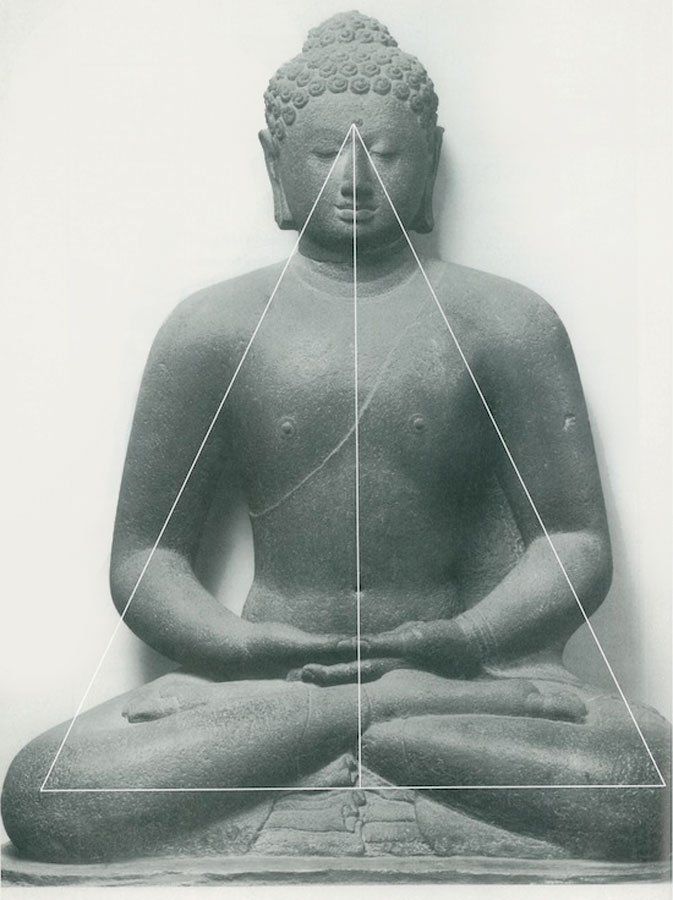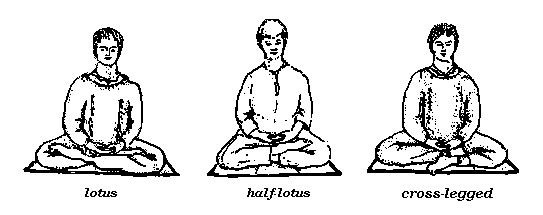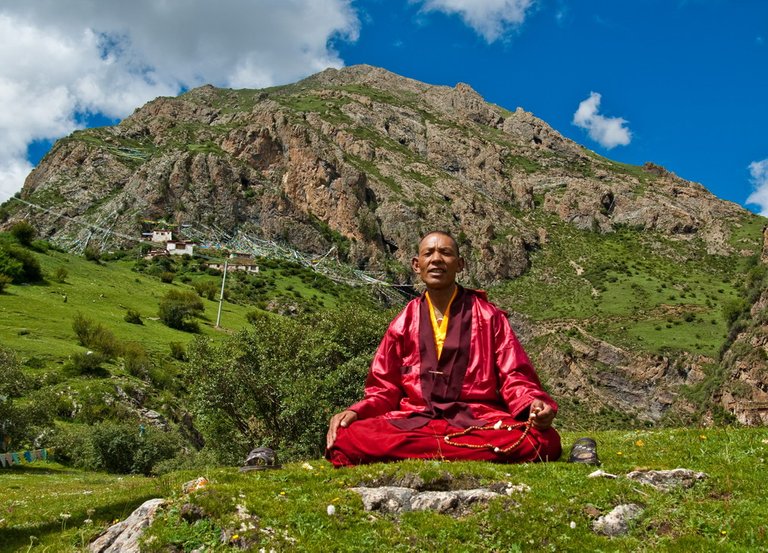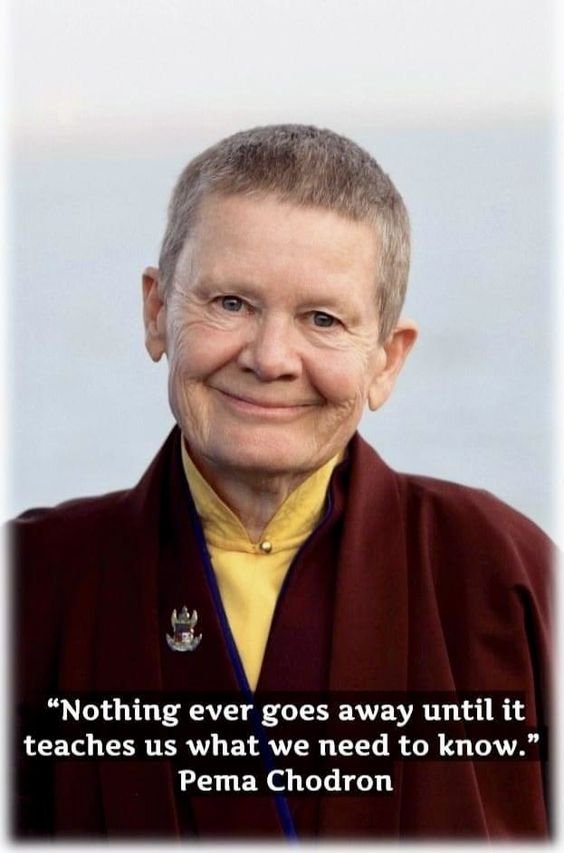Para acceder a la primera parte / To access the first part
Meditation posture / La postura de meditación

FUENTE
We must choose a comfortable chair or a meditation cushion (zafu) and adopt the seven points of Vairocana's meditation. They are so called because Vairocana means "full radiance." These seven points are intended to make our mind shine. If we are sitting in a chair, we adopt as many of these points as possible.
Debemos elegir una silla cómoda o bien un cojín de meditación (zafu) y adoptar los siete puntos de la meditación de Vairocana. Se llaman así porque Vairocana significa “resplandor completo”. Estos siete puntos pretenden hacer resplandecer a nuestra mente. Si estamos sentados en una silla, adoptamos la mayor cantidad posible de estos puntos.
The first point is a straight back, avoiding leaning on a backrest, as this causes the back to lose its 90 degree angle with respect to the legs. The second point is to have the shoulders open and relaxed. The most used metaphor in the texts is that the shoulders should be open like the wings of a great bird about to take flight. The third aspect refers to the hands, however, there are more instructions related to this point. The hands should rest on the legs. It may also be that the right hand rests on the left with the palms up, with the thumbs almost touching at the level of the navel. Also, the arms should be parallel to the torso, with the elbows squeezing the ribs.
El primer punto es la espalda recta, evitando recargarnos en un respaldo, ya que esto hace que la espalda pierda el ángulo de 90 grados respecto de las piernas. El segundo punto consiste en tener los hombros abiertos y relajados. La metáfora más usada en los textos es que los hombros deben estar abiertos como las alas de una gran ave a punto de emprender el vuelo. El tercer aspecto hace referencia a las manos, sin embargo, hay más instrucciones relacionadas con este punto. Las manos deben descansar sobre las piernas. También puede ser que la mano derecha descanse sobre la izquierda con las palmas hacia arriba, con los pulgares casi tocándose a la altura del ombligo. Además, los brazos deben estar paralelos al torso, con los codos apretando las costillas.

FUENTE
The fourth point indicates that the chin should point inward. The fifth point is to keep your eyes open, blinking as many times as necessary, and look over your nose, at about 45 degrees. as Dudjom Rinpoche says. "I meditate with my eyes open because closed eyes connect me with the darkness of Samsara." The sixth point is that the tongue should rest on the upper front teeth and keep the mouth relaxed. The lips can outline a soft smile. The last point is related to the feet and legs. If we are in a chair, both feet should rest parallel on the floor in such a way that the thighs and calves form a 90 degree angle. If we sit on the meditation cushion (zafu), the legs are crossed. If we adopt the "half lotus position", we must bend the left leg inward and place the right leg on top of the left calf. This posture will give us body symmetry. The "full lotus position", although not essential, consists of placing the left foot on the right thigh and the right foot on the left thigh.
El cuarto punto indica que el mentón debe apuntar hacia adentro. El quinto punto es mantener los ojos abiertos, parpadeando las veces necesarias, y la mirada por encima de la nariz, a unos 45 grados. como dice Dudjom Rinpoche. “Medito con los ojos abiertos porque los ojos cerrados me conectan con la oscuridad del Samsara”. El sexto punto consiste en que la lengua debe descansar en los dientes frontales superiores y mantener la boca relajada. Los labios pueden esbozar una suave sonrisa. El último punto está relacionado con los pies y las piernas. Si estamos en una silla, los dos pies deben descansar paralelamente en el suelo de tal manera que los muslos y las pantorrillas formen un ángulo de 90 grados. Si nos sentamos en el cojín de meditación (zafu), las piernas están cruzadas. Si adoptamos “la media postura del loto”, debemos doblar la pierna izquierda hacia adentro y colocar la pierna derecha encima de la pantorrilla izquierda. Esta postura nos procurará una simetría corporal. La “postura completa del loto”, aunque no es indispensable, consiste en colocar el pie izquierdo sobre el muslo derecho y el pie derecho sobre el muslo izquierdo.

FUENTE
In other texts it is possible to find slightly different instructions to the seven points of Vairocana. Those described here are based on verbal instructions offered by Shamar Rinpoche in retreats and meditation courses.
En otros textos es posible encontrar instrucciones ligeramente distintas a los siete puntos de Vairocana. Los descritos aquí están basados en instrucciones verbales ofrecidas por Shamar Rinpoche en retiros y cursos de meditación.
TASHI DELEK
This introduction to the practice of Shamata was made by Eduardo Herrera (Lama of the Himalaya Center in Mexico). At the time of writing this manual, the lama was a resident teacher at the Bodhi Path Mexico Center. Practice Manual of the Bodhi Path Centers for Latin America. It is important to transmit the teachings as they were left by the 14 Shamarpa who created the Bodhi Path Centers. I am sharing the instructions as they came to me, hoping that they will be of benefit to all of you.
Esta introducción a la práctica de Shamata fue realizada por Eduardo Herrera (Lama del Centro Himalaya en México). En el momento de realizar este manual el lama se encontraba como maestro residente del Centro Bodhi Path México. Manual de Práctica de los Centros Bodhi Path para Latinoamérica. Es importante transmitir las enseñanzas tal cual las dejó el 14 Shamarpa quien creó los Centros Bodhi Path.Les comparto las instrucciones tal cual llegaron a mí deseando que les sea de beneficio a todos.

FUENTE
CURRENT CALENDAR / CALENDARIO ACTUAL
2 Thursday: 1.10. ⋅ Day 10 of this lunar month is doubled. ⋅ Demonstration of Miracles ⋅ 100 000 times day ⋅ Water-Wind ⋅ Chi: Do not make any community events ⋅ LA: waistline ⋅ Yelam: South-West ⋅ Auspicious haircutting day (Achievement of power)
2 jueves: 1.10. ⋅ El día 10 de este mes lunar se duplica. ⋅ Demostración de Milagros ⋅ 100 000 veces al día ⋅ Agua-Viento ⋅ Chi: No haga ningún evento comunitario ⋅ LA: cintura ⋅ Yelam: Sudoeste ⋅ Día de corte de cabello propicio (Logro de poder)
